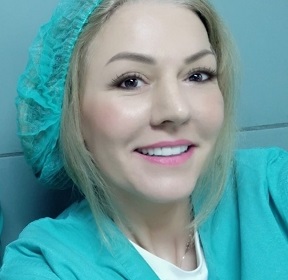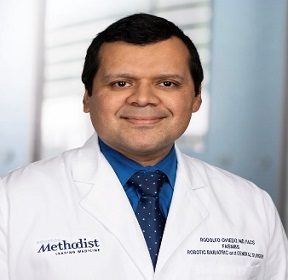Speakers
Dalamagka Maria
General Hospital of Larisa GreeceTitle: PAIN MANAGEMENT
Abstract:
When acute pain turns into chronic, then it is not a symptom of a disease, but it is a disease in itself. It lasts longer than the expected course of the disease or injury. Usual period of 3-6 months. In the past the answer to chronic pain was: "everything is in your mind". A useful definition by Margo McCaffrey is: "pain is what describes the person who experiences it and exists when he says he exists." The International Union for the Study of Pain says it is "an unpleasant aesthetic and emotional experience, combined with actual or potential tissue damage, or described in terms of such damage". Pain is transmitted through the body through the nervous system when nerve endings detect damage to a part of the body.
Today, pain specialists can understand how pain is created: the way the nervous system, including the spinal cord, interacts with the brain to create the sensation of pain. Knowledge of the neurotransmitter system, the chemical messengers that transmit nerve signals, has paved the way for important new methods of treating pain. In recent years, scientists have learned how to manage these chemical messengers to change the way they interact with brain signals. This has led to the use of antidepressants and other drugs, which work with certain chemicals in the brain, such as which affect emotions and help in perceiving pain. There are now drugs that are very effective. And with advances in MRI, researchers can prove that the changes are very real in the brain. We can see exactly where the sensation of pain in the brain is created, when it is activated by a stimulus. We can see the effects of pain on a person's emotional state. There is also a new concept, a process called central awareness. If the initial pain from an injury is not treated properly, then these pain signals are sent repeatedly, resulting in changes in the central nervous system, which make it increasingly vulnerable. So over time, even normal stimuli can be perceived as painful. With this knowledge, pain specialists are now prescribing medications that attack moderate to severe chronic pain from different perspectives: innovative drugs, nerve-targeting techniques, and drug delivery pumps that offer strong nerve analgesia. Doctors also approve of the use of psychotherapy, relaxation techniques, hypnosis and alternative therapies, such as acupuncture, which rely on the growing evidence of a brain-body connection to relieve chronic pain. There is still much to learn, but research has shown evidence of the development of even newer treatment options. Pain specialists now prescribe medications that attack moderate to severe chronic pain from different angles: innovative drugs, nerve-targeting techniques, and drug pumps, which offer strong nerve root analgesia. Doctors also approve of the use of psychotherapy, relaxation techniques, hypnosis and alternative therapies, such as acupuncture, which rely on the growing evidence of a brain-body connection to relieve chronic pain. There is still much to learn, but research has shown evidence of the development of even newer treatment options. Pain specialists now prescribe medications that attack moderate to severe chronic pain from different angles: innovative drugs, nerve-targeting techniques, and drug pumps that offer strong analgesia to nerve roots. Doctors also approve of the use of psychotherapy, relaxation techniques, hypnosis and alternative therapies, such as acupuncture, which rely on the growing evidence of a brain-body connection to relieve chronic pain. There is still much to learn, but research has shown evidence of the development of even newer treatment options. and drug delivery pumps, which offer a strong analgesia to the nerve roots. Doctors also approve of the use of psychotherapy, relaxation techniques, hypnosis and alternative therapies, such as acupuncture, which rely on the growing evidence of a brain-body connection to relieve chronic pain. There is still much to learn, but research has shown evidence of the development of even newer treatment options. and drug delivery pumps, which offer a strong analgesia to the nerve roots. Doctors also approve of the use of psychotherapy, relaxation techniques, hypnosis and alternative therapies, such as acupuncture, which rely on the growing evidence of a brain-body connection to relieve chronic pain. There is still much to learn, but research has shown evidence of the development of even newer treatment options.
Many patients come for treatment in the final stages of chronic pain, when it is more difficult to treat. The sooner treatment is started, the better the chances of successfully treating the pain. When the pain is severe then doctors turn to stronger drugs to treat it:
Biography:
Studies:
DIPLOMA OF MEDICINE of the Medical University of Sofia-Medical School -Sofia- Bulgaria Master's degree (recognition by DIKATSA)
Clinical Experience:
- Three-month training in regular Pathology, Surgery and Cardiology Outpatient Clinics and Emergency Clinics of the General Hospital of Trikala and in the Anesthesiology Department of the General Hospital of Trikala (20/10/2003 - 10/01/2004).
- Twelve-month field service at the Farkadonas Police Station, General Hospital of Trikala, Prefecture of Trikala (2004-2005).
- Specialization in Anesthesiology at the General Hospital of Larissa and part of it and at the University Hospital of Larissa (19/12/2005 -20/9/2010)
- Curator of B 'Anesthesiology at the General Hospital of Edessa-border A' (8/06/2011 to 8/8/2017. Permanent Decision 11/2016)
- Curator of 2nd Anesthesiology at the General University Hospital of Larissa (8/8/2017 until today) Upgrade to Curator A '19/07/2018 Scientific work
- Doctoral dissertation (Doctor of Medicine AUTh - 2016). In the context of the dissertation, attending postgraduate courses, two consecutive years and presentation of three postgraduate theses. Writing the dissertation on "Pain" and publishing the study in BMJ (2015). The topic of the doctoral dissertation entitled "Postoperative analgesia and electroacupuncture in plastic inguinal hernia repair with mesh" was announced in the number 16 / 14-4-2011 meeting of the General Assembly of the Medical School of AUTh. The Test for the doctoral diploma was graded with Excellent on 7/12/2015 and the award for a doctorate in Medicine took place on 7/3/2016.
- Diploma in Medical Acupuncture (2009). Postgraduate training in medical acupuncture ICMART (2 years). Additional four postgraduate seminars in medical acupuncture.
Rodolfo J. Oviedo
University of Texas United StatesTitle: Robotic Gastrointestinal Surgery
Abstract:
The field of gastrointestinal surgery has experienced the progression of minimally invasive techniques including the robotic approach, which enables surgeons to perform the most advanced operations with minimal tissue trauma, decreased risk of complications, and improved ergonomics which mimic the human hand movements with enhanced visualization. The robotic applications in gastrointestinal surgery for benign and malignant disorders has revolutionized the way in which surgery is performed in the United States and other countries. The sub-specialties of metabolic and bariatric, colorectal, hepatobiliary and pancreatic, and foregut/anti-reflux surgery have witnessed the production of high-quality randomized controlled trials, meta analyses, prospective and retrospective cohort studies which have established, in many instances, superior results to those of laparoscopy and at least non-inferior outcomes. The following lecture will present an abbreviated yet thorough overview of the current status of robotic gastrointestinal surgery. It will also illustrate the advances that have been achieved to date as a product of perseverance, determination, and the pursuit of innovation with patient safety as the priority.
Biography:
Rodolfo J. Oviedo, MD, FACS, FASMBS graduated from medical school at The University of Texas at San Antonio in 2007, and from Houston Methodist General Surgery Residency Program in 2013. He decided to pursue an Advanced Minimally Invasive Gastrointestinal and Bariatric Surgery Fellowship at Baptist Hospital of Miami from 2017 to 2018. He is a board-certified and fellowship-trained metabolic and bariatric surgeon, robotic advanced gastrointestinal surgeon, and flexible endoscopic surgeon. He is a Diplomate of the American Board of Surgery, a Fellow of the American College of Surgeons, and a Fellow of the American Society for Metabolic and Bariatric Surgery.
Dr Essam Dhafer Alhothaifi
Yonsei University College of Medicine KoreaTitle: Surgical Outcomes after Microscopic Incomplete Resection (R1) of Colorectal Liver Metastases in the Era of Aggressive Surgical Approach
Abstract:
A ≥ 1-mm margin is standard for resection of colorectal liver metastases (CRLM). However, microscopic incomplete resection (R1) is not rate because aggressive surgical resection has been attempted in multiple and bilobar CLM. In this study, we analyzed surgical outcomes after R1 resection of CRLM.From 2005 to 2018, 371 consecutive patients undergoing liver resection for CRLM were included. R1 resection was defined to have All patients were divided into R0 and R1 group. Recurrence pattern disease-free survival(DFS) and overall survival(OS) were analyzed between the two groups.A total of 371 patients included in the study,3 patients were Excluded as ther were R2 liver resection. Among them, R1 resection was found in 42 (11.3%) patients. The median age at diagnosis was 59 years (range, 22 to 86). There were 246 (33.7%) men and 125 women (66.3%). The incidence of intrahepatic recurrence was not significantly different between R0 and R1 resection. Similarly, there was no significant difference in term of surgical margin recurrences between patients with R0 and R1 resections (42% [35/84] vs 35% [6/17], respectively, P = 0.788). When comparing R0 and R1 resection, the 1-, 3-, and 5-year DFS and OS rates were not statistically significant even after neoadjuvant chemotherapy.: R1 resection showed a similar marginal recurrence rate and comparable DFS and OS compared to R0 resection. R1 resection should be part of the modern multidisciplinary, aggressive approach to CRLM.
Biography:
Essam Dhafer Alhothaifi Division of HBP surgery, Department of Surgery, Yonsei University College of Medicine, Seoul, Korea



